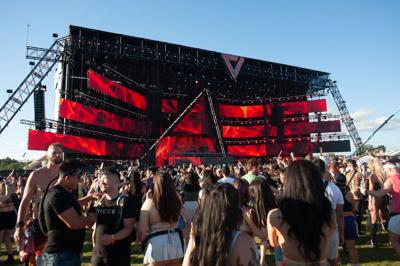In the last month IŌĆÖve attended two concerts at History, the music venue on Queen Street East in The Beach neighbourhood. A middle-aged person seeing acts he has listened to since the 1990s is not remarkable, but the venue location is: History is far from downtown, the traditional place for such things.
Coming from the west side of ╬┌č╗┤½├Į, I had a lot of time to think about this on the 10 kilometre bike ride there. I rode, in part, because getting to and from the east side of ╬┌č╗┤½├Į is legendarily difficult by public transit or automobile these days.╠²
Calling History ŌĆ£far awayŌĆØ is ridiculous to anybody who lives east, of course. Near and far are relative, but the shared idea of where things are supposed to happen in ╬┌č╗┤½├Į has evolved over time. ItŌĆÖs elastic, and expanding beyond downtown ŌĆö a sign of the city maturing, sharing the cultural wealth beyond the centre.
The journey to History reminded me of cities like Berlin or Tokyo, which have multiple areas where such things happen, often 10 or more kilometres apart. In ╬┌č╗┤½├Į farther afield neighbourhoods might not be overwhelmingly busy hives of activity yet, but there are growing indications of permanent shifts in the cityŌĆÖs cultural landscape. ThatŌĆÖs good, but it comes with challenges.
The recent announcement of a temporary 50,000-person outdoor concert venue called Rogers Stadium at the former Downsview Airport is another sign of this shift. Downsview is an ideal place for such venues and already has some history as a place where things happen.
In 2003 the airport runway hosted nearly half a million people at SARSStock. Hundreds of thousands visited the same place . The area is served by two subway stations and a GO Train stop, plus bus routes along the perimeter, making it easy for locals as well as people throughout the region to get to.
Not being downtown can have a downside, though. At History I noticed people leaving early to catch taxis or ride shares, a phenomenon that occurs at the Budweiser Stage at Ontario Place, the latter just far enough away from public transit to make it an unappealing option for everyone. Leaving an event early is something that happens at venues primarily reached by car, where everyone wants to beat traffic.╠²
In theory, this shouldnŌĆÖt be necessary at an urban venue with a variety of transit options nearby, yet the phenomenon is widespread in ╬┌č╗┤½├Į because our transit system is broken.
Things happen downtown because itŌĆÖs a part of the city shared by everyone, but itŌĆÖs also convenient. Downtowns are made for getting into and out of, and large crowds can disperse easily after events. When leaving Massey Hall or even Scotiabank Arena after an event, itŌĆÖs often hard to tell something big was happening a few blocks away. The city just absorbs people, as there are multiple ways to leave.
The scene outside History was different: a snarl of cars crawling along Queen and people waiting for rides on the sidewalk or at the streetcar stops. As I cycled home up Coxwell Avenue there was a gaggle of people waiting at Dundas who had walked up to catch the bus, one that would surely get filled up a block south at Queen. ItŌĆÖs a harder place for everyone to leave all at once than downtown is.
Downsview is good for big crowds, but as John Lorinc argued in the Star last weekend, the recent announcement is troubling because of the vertically integrated monopoly Rogers, with its Downsview partner Live Nation, has on event venues and ticketing. Rogers Stadium is yet another cornered part of the local market.
Aside from those serious concerns, Rogers Stadium is supposed to be a temporary venue until redeveloped, but itŌĆÖs good to start thinking of Downsview as a hub for events because just to the east of the airport site is the Festival Terrace in Downsview Park, .╠²
Rogers Stadium is a behemoth but ╬┌č╗┤½├Į needs a variety of smaller venues too. Not far from Downsview is Kingswood Music Theatre at CanadaŌĆÖs Wonderland, a mid-sized 15,000 capacity venue that declined after the Bud Stage (then called Molson) opened in the 1990s. Other venues could be tapped too, like the criminally underused 1936 art deco CNE bandshell that serves as a lowly parking lot when the Ex isnŌĆÖt running.
Last year the non-profit music arts organization Wavelength and the School of Cities at U of T produced a report looking at conservation and innovation of music venues in Ontario. While Rogers Stadium may get maximum hype, itŌĆÖs a variety and proliferation of venues at different sizes that can start to really spread and foster cultural hubs downtown and beyond. LetŌĆÖs root for that in the long term.



























To join the conversation set a first and last name in your user profile.
Sign in or register for free to join the Conversation